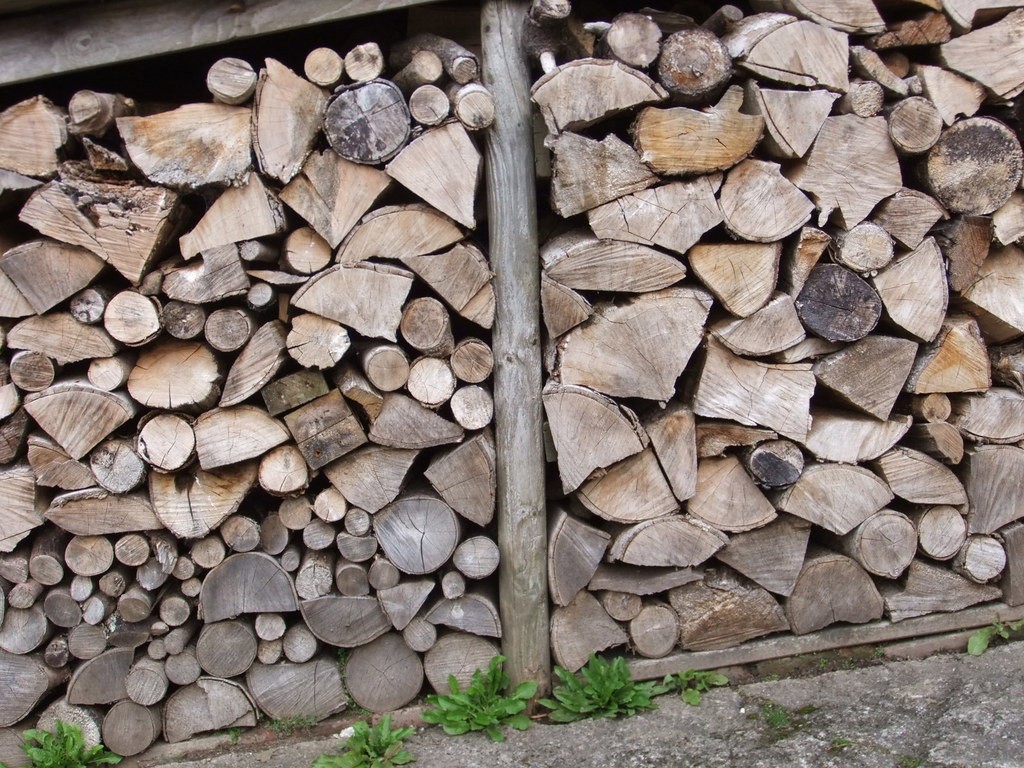Driving around in September, you see walls of firewood wedged between yard trees, covered with scrap metal and ready for battle. Porch racks are piled high, and in many rural towns, people are coming together to prepare community wood banks. This typically happens at town dumps on weekends, where there are donuts and coffee and copious smack talk about who can split more, stack better.
Wood banks have an early American precedent: Puritan “wood spells” or “sleddings.” The parish was expected – and sometimes, contractually obligated – to provide firewood for their minister. This practice is mentioned in The Crucible, when the loathsome Reverend Parris complains that his parish has given him nary a stick. Alice Morse Earle’s Sabbath in Puritan New England provides more details on the practice, including several first-hand accounts that show that the giving, and getting, of firewood sometimes proceeded with less-than-godly grace:
One thrifty parson, while watching a farmer unload his yearly contribution, remarked, "Isn't that pretty soft wood?" "And don't we sometimes have pretty soft preaching?" was the answer.
Rev. Stephen Williams, of Longmeadow, never failed to make a note of the "wood-sleddings" in his diary. He wrote on Jan. 25, 1757, "Neighbors sledded wood for me and shewed a Good Humour. I rejoice at it. The Lord bless them that are out of humour and brot no wood."
Earle also includes this fun example of early American passive-aggression, delivered by a parson from his Sunday pulpit:
I will write two discourses and deliver them in this meeting-house on Thanksgiving Day, provided I can manage to write them without a fire.
Earle was a nineteenth century writer of popular histories who specialized in the everyday details of colonial life. If you’d like to explore her works, you can find them on-line via Project Gutenberg. For a deeper think on the meaning of firewood, and why people keep cutting and stacking their own, check out this essay by Castle Freeman, published in our 2016 autumn issue.



Discussion *